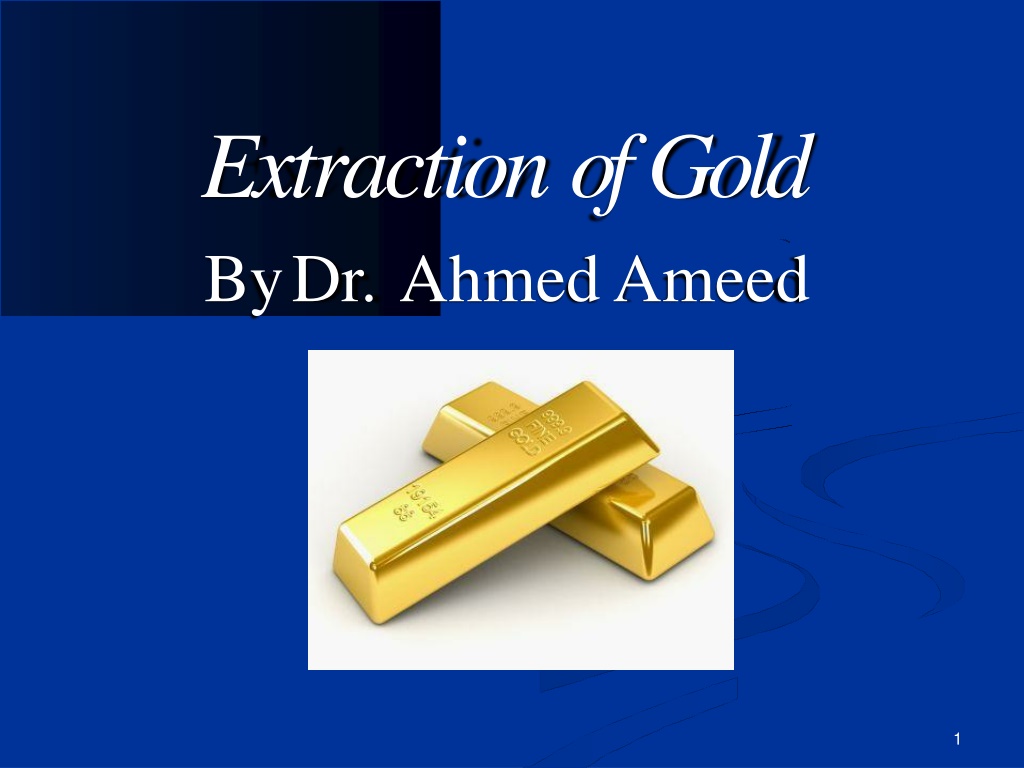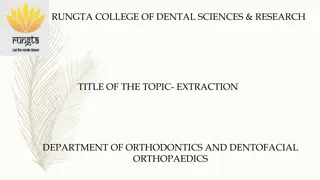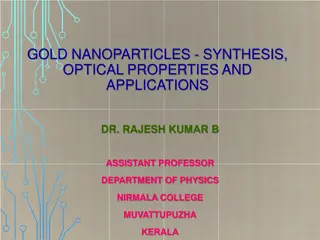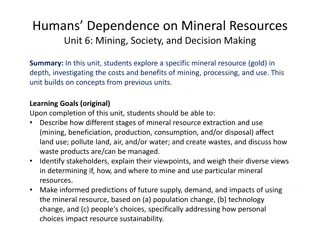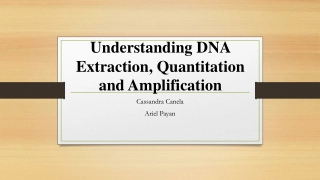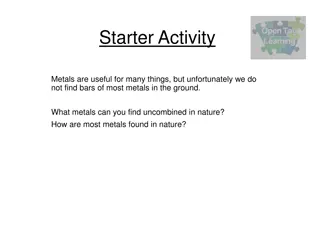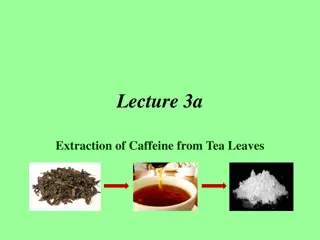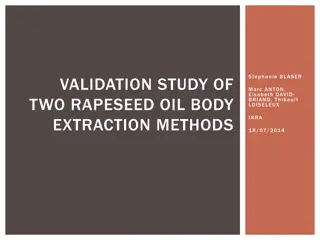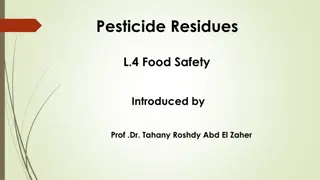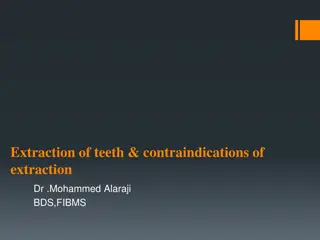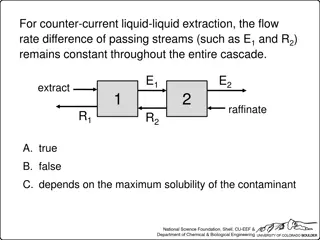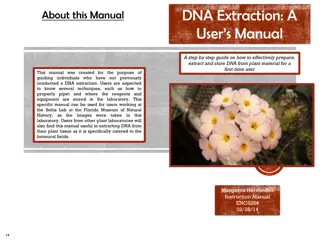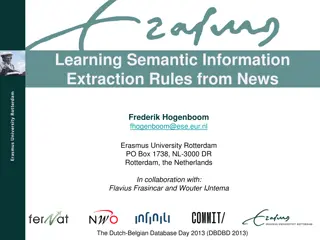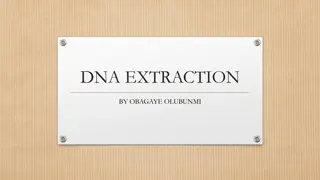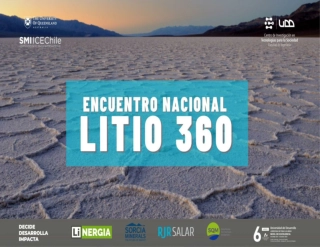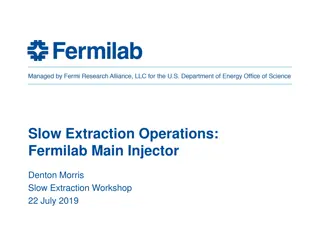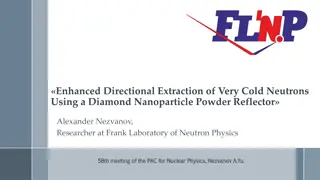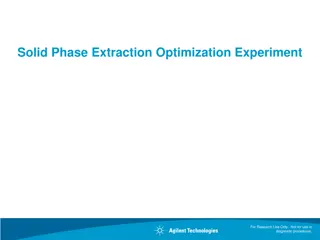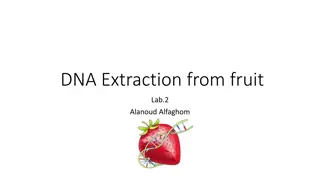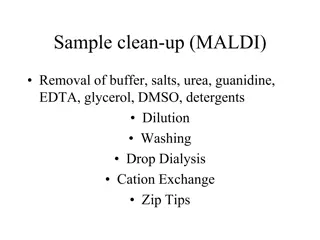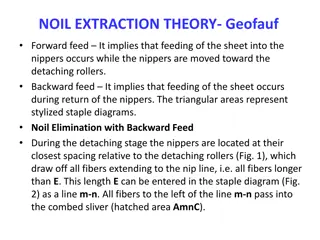Gold Extraction Methods and Characteristics Explained
Gold extraction involves various methods such as hard rock mining, panning, sluicing, and cyanidation. Gold is known for its density, malleability, conductivity, and durability, making it ideal for jewelry, dentistry, and technology. Different types of gold ores exist, including native gold and ores alloyed with elements like silver. The extraction processes aim to separate gold from rocks or low-grade ores through chemical reactions and physical techniques like sluicing and heap leaching.
Download Presentation

Please find below an Image/Link to download the presentation.
The content on the website is provided AS IS for your information and personal use only. It may not be sold, licensed, or shared on other websites without obtaining consent from the author. Download presentation by click this link. If you encounter any issues during the download, it is possible that the publisher has removed the file from their server.
E N D
Presentation Transcript
ExtractionofGold ByDr. AhmedAmeed 1
Characteristics and uses of gold Density :19.3g/cm3, Tm:1064 Shinny: for Jewelry used in dentistry to make the crowns for teeth. Malleable and ductile:canbe bent &flattened . For reasonit isusedto make finewires and thin,flatsheets Good conductor for heat & electricity: used in transistors, computer circuits & firefighting cloths. oC Durable: does not tarnish or corrode easily, sometimes this 2
Types of ores Native metal, Electrum), Gold usually with mercury(as as sizeable nuggets, flakes, grains or microscopic particles embedded in other rocks. Ores with other elements are comparatively rare. They include calaverite,sylvanite,nagyagite, petziteand kren nerite occurs alloyed principally with silver an Amalgam). as a (as Native gold can occur or in which gold occurs in chemical composition 3
Gold extraction Gold mining Hard rock mining used to extract gold encased in rock. mining mining. Either or open pit underground Panning ) ( sand and gravel ( ) containing gold around with water is much denser quickly the pan. is shaken pan. Gold rock, bottom in a than the so of settles to 4
Gold extraction Gold mining Sluicing water is channelled to flow through riffles ) ( at create dead-zones in the water current which allows gold to drop out of suspension. a sluice-box with the bottom which Sluicing and panning results in the direct recovery of small gold nuggets ) (and flakes. 5
Gold extraction Gold ore processing Gold cyanidation: The most commonly used process for gold extraction. Used to extract gold from low-grade ore. Gold is oxidised to a water-soluble aurocyanide metallic complex Au(CN)2. In this dissolution process, the milled ore is agitated with dilute alkaline cyanide solution, and air is introduced: 4Au + 8NaCN + O2 + 2H2O 4NaAu(CN)2 + 4NaOH 6
Gold extraction Gold ore processing Gold cyanidation: At a slurry concentration of around 50% solids, the slurry passes through a series of agitated mixing tanks with a residence time of 24 hrs. The gold-bearing liquid is then separated from the leached solids in thickener tanks or vacuum filters & the tailings ) ( are and CN-prior to disposal. washed to remove Au 7
Gold extraction Gold ore processing Heap Leaching Is an alternative to the agitated leaching process. Drastically reduced gold recovery costs of low ore. grade Ore grades as low as 0.3 g per ton can be economically processed by heap leaching. 8
Gold extraction Gold ore processing Heap Leaching Generally requires 60 to 90 days for processing ore that could be leached in 24 hrs in a conventional agitated leach process. compared with 90% in Au recovery is around 70% as an agitated leach plant. BUT, has gained wide favour due to vastly reduced processing costs. Frequently, mines will use agitated leaching for high- grade ore & heap leaching for low grade ores that would otherwise be considered waste rock. 9
Gold extraction Gold ore processing Gold cyanidation: Merrill-Crowe process Traditional method for cyanide solutions. Au recovery from pregnant Once dissolution of Au is complete, the remaining rock pulp if filtered off through various filters to produce a sparkling ) ( clear solution. O2 is removed from the clarified solution by passing the solution through a vacuum deaeration column. 10
Gold extraction Gold ore processing Gold cyanidation: Merrill-Crowe process Zinc dust is then added to the cyanide solution chemically reduce the gold to the metal. 2Au(CN)2 + Zn The metallic gold is then filtered out & refined. to 2Au+ Zn(CN)4 Smelting of resultant powder (rich Au) into steel molds and the slug is remove from the top furnace. Electrolysis purity. is done to get high gold grade 99.999% 11
